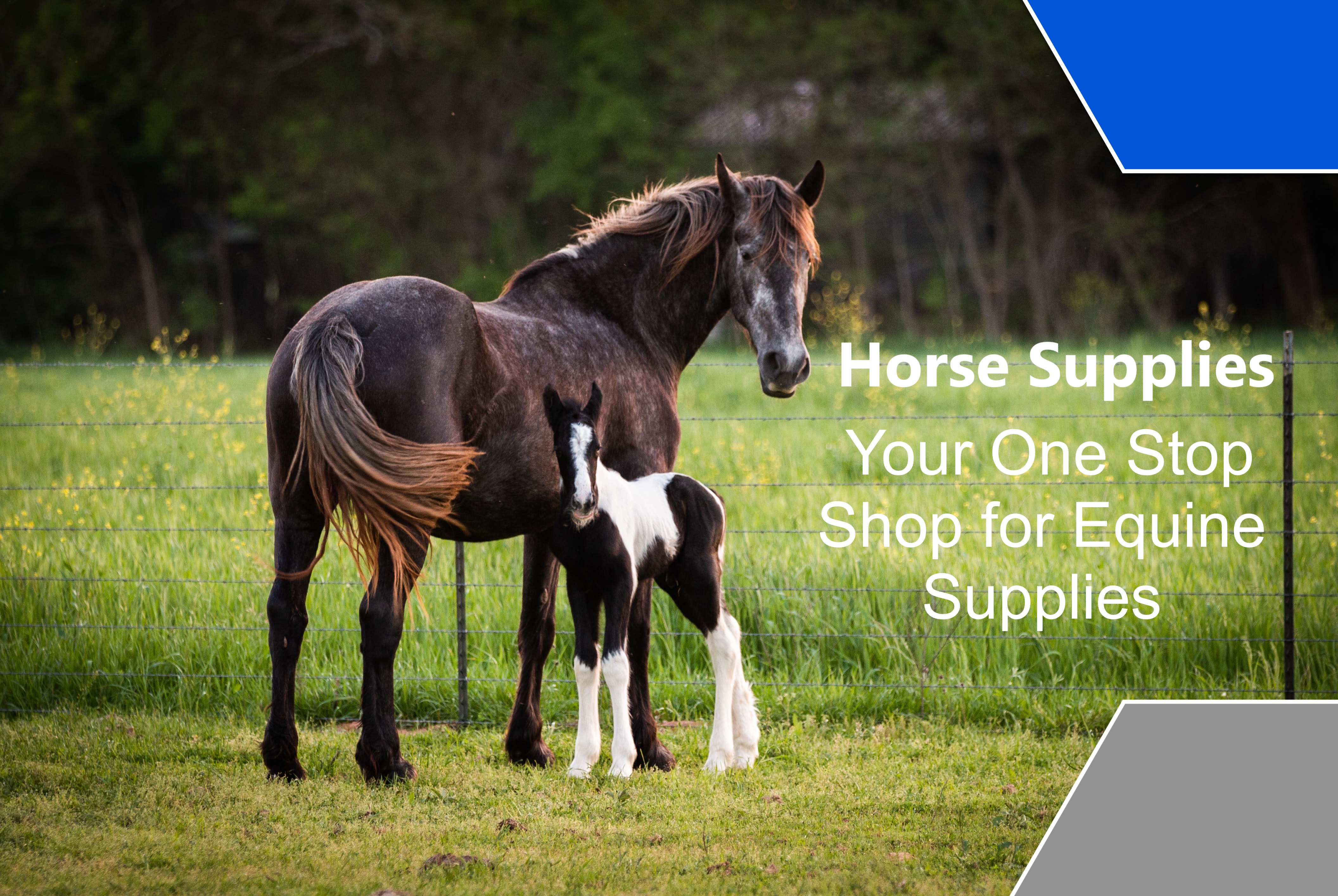Horse Supplies - Your One Stop Shop for Equine Supplies

Horse Supplies - Your One Stop Shop for Equine Supplies
As a veterinarian working with horses, it is essential to have the right equipment and supplies on hand to ensure the health and well-being of your equine patients. In this blog, we will outline the key pieces of equipment and supplies for a horse that are essential for any veterinarian working with equines in Australia.
Stethoscope:
A stethoscope is one of those standout featured products for any veterinarian, allowing them to listen to a horse's heart and lung sounds. It is important to have a high-quality stethoscope with good sound clarity to accurately assess a horse's respiratory and cardiovascular health.
Thermometer:
Taking a horse's temperature is an important part of any physical examination, and a digital thermometer is the most accurate and efficient way to do so. It is essential to add a rectal thermometer in your horse supplies toolkit, specifically designed for use in equines, as regular human thermometers can be too short and cause injury.
Dental equipment:
Regular dental care is essential for your horse patients, so it's important to have the right tools on hand. This includes a float (used to smooth rough edges on the teeth), a speculum (used to hold the horse's mouth open), and a mouth gag (used to keep the horse's mouth open during more advanced procedures).
Otoscope:
An otoscope is a hand-held device used to examine the ears of a horse, including the ear canal and eardrum. It is important to have a good-quality otoscope with a bright light and a magnifying lens to accurately diagnose any issues with a horse's ears.
Suture kit:
A suture kit is essential for any veterinarian performing surgery on horses. It should include a variety of suture materials, needles, and instruments such as forceps and scissors.
X-ray machine:
An X-ray machine is a valuable tool for diagnosing issues with a horse's bones and joints. It is important to have a portable X-ray machine that can be easily transported to stables or shows.
Electrocardiograph (ECG):
An ECG machine is used to measure the heart rate and rhythm of a horse. It is a useful tool for diagnosing any cardiovascular issues and monitoring a horse's heart during surgery.
Endoscope:
An endoscope is a flexible, lighted instrument used to examine a horse's internal organs and structures. It is a valuable tool for diagnosing issues with a horse's respiratory, digestive, and reproductive systems.
Fluid therapy supplies:
Fluids are an important part of horse treatments, and it is essential to have the right supplies on hand. This includes IV fluid bags, IV catheters, and fluid pumps.
Bandaging supplies:
Bandaging is a common part of horse care, and it is important to have a variety of bandaging materials on hand, including gauze, wrap, and easy to use self-adhesive bandages.
Hoof care supplies:
Regular hoof care is essential for equines, so make sure to have hoof horse supplies such as hoof nippers, hoof testers, and hoof knives on hand to help with trimming and examining the hooves.
First aid kit:
Accidents can happen, so it's important to have a well-stocked first aid kit on hand. This should include items such as wound cleaner, bandages, wound dressings and other effective essential items. A veterinarian first aid kit design should include general items for any examination such as gloves.
Medications:
It is important to have a well-stocked cart of medications that are commonly used in horse care, such as painkillers, antibiotics, and anti-inflammatory drugs for swelling and pain relief. It's also a good idea to have a range of wormers on hand to treat, prevent parasites and ensure a healthy horse.
In conclusion, as a veterinarian working with horses, it is essential to shop for the right equipment and horse supplies to provide the best care possible for your equine patients. By investing in the right product and equipment, veterinarians can provide effective world class care for their equine patients.
VetCart Australia - veterinary purchasing procurement website designed specifically for veterinarians.

